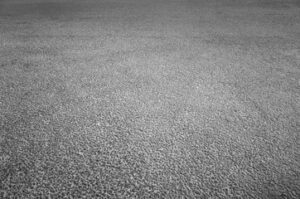Finding a used car that fits your needs and budget can be a challenging task. Fortunately, there are many resources to help you make the right choice.

Some of the most important things to consider include: market trends, seasonality and vehicle history. You should also carefully evaluate your priorities and perform a thorough inspection. Contact Juanito’s Auto Body for professional help.
Buying a used car is often more affordable than buying a new one. You can save on upfront costs like insurance, taxes and financing fees, which could help you to afford a vehicle that fits your budget. In addition, you may save on ongoing expenses, such as fuel and maintenance.
A recent study revealed that the average new car cost $47,542–$20,365 more than the average used vehicle. This discrepancy shows that consumers are struggling with escalating car prices. In this climate, it makes sense to consider the cost of a used car when making a purchasing decision.
The supply of used vehicles is tight, with the days’ supply of vehicles at lower price points at its lowest since 2021. It is even harder to find a vehicle at the $15,000 mark, with only 28 days’ worth of inventory. This is due to a number of factors, including the COVID-19 pandemic, chip shortages and ongoing tariff disputes.
As a result, consumers are rushing to buy cars while they still can. The Manheim Used Vehicle Value Index jumped last month to its highest level in three years. Experts say that tariff-related price hikes could exacerbate the situation.
When you purchase a used car, you’ll get a lot of value for your money. You can access the latest features and design enhancements without the hefty price tag that comes with brand-new models. Additionally, the depreciation that new vehicles experience will already be factored into the price. By choosing a used model from Sommer’s Buick GMC, you can enjoy modern features at a fraction of the price.
Another benefit of using a used car is that it gives you more options. With the help of online platforms, such as Spinny, you can easily find the vehicle that meets your specific needs and requirements. This kind of platform will reveal everything about the vehicle, from its history to its safety and performance standards. This will help you to narrow down your options and make a more informed purchasing decision. The internet has also made it easy to read vehicle reviews and compare vehicles.
Warranty
A used car warranty is a contract that protects you from unexpected repair bills. It covers the cost of repairs for certain vehicle components, which may include everything from the engine to the transmission and more. Some warranties are offered by dealers, while others come from manufacturers or third parties. You can find the best warranty for your needs by comparing the coverage options and terms of each one. Generally, a dealer’s warranty is shorter and covers fewer vehicle systems than a manufacturer’s warranty. It’s also important to understand state laws, as they influence the terms of warranty coverage.
A warranty can provide peace of mind, especially when you’re buying a used car that has an unknown history. It’s a good idea to review the owner’s manual and comb through the service records for any potential issues. You should also check for recalls and other maintenance requirements.
Most states require that car dealers put a Buyers Guide in the window that discloses whether the dealer offers a warranty and its terms. This information can help you choose the best used car for your budget.
It’s crucial to set a budget before purchasing a used car, as it will impact how much you spend on a monthly payment. A car loan should not be more than 10% of your monthly income, and you should consider the other costs associated with owning a car, such as routine maintenance, insurance, and fuel costs.
New cars offer the latest features, but they depreciate quickly and can have reliability problems. Used cars, on the other hand, are cheaper and usually have less depreciation. The best option for you depends on your personal preferences and priorities.
Many people think that an extended warranty on a used car is a waste of money, but it’s actually a great investment. Most people never need to use their extended warranty, and it can protect you from large repairs and maintenance expenses. Some people even report that the extra expense of an extended warranty saved them thousands of dollars in repairs and maintenance costs.
Reliability
A common perception is that used cars aren’t as reliable as new ones, but this belief is unfounded. Modern vehicles are designed to last, and with proper maintenance, many can go 200,000 miles or more without any significant issues. Additionally, used car buyers can take advantage of a wide selection of quality used models and often pay less than what they’d spend on a comparable new vehicle. This makes buying a used car one of the smartest financial decisions that can be made.
Buying a used vehicle also means saving money on taxes and insurance premiums. Since a used car’s value has already depreciated, it typically costs less to insure. However, it’s important to research the car’s history and look for any damage that may affect its resale value and overall reliability. Some manufacturers offer Certified Pre-Owned (CPO) programs that include a detailed inspection and extended warranty, which can provide peace of mind for some shoppers.
Some brands are known for their reliability, with some rated as top choices in Consumer Reports’ annual rankings of the most reliable used cars. These include Lexus, Toyota, Mazda, Acura, and Honda, which all boast long track records of longevity, dependable performance, and low maintenance costs.
To find the best used car for you, do your research and visit multiple dealerships to compare vehicles and test drive them. Pay attention to how the vehicle drives, any unusual noises or vibrations, and comfort levels. It’s also helpful to read reviews and ratings of each vehicle on the Internet, as well as checking its history report with services like Carfax or AutoCheck. Finally, choose a trustworthy used car shipping service such as Sherpa Auto Transport to get your new-to-you car delivered quickly and safely. This makes the entire process smoother and easier for you.
Safety
Purchasing a used vehicle is often a smart financial move, but it’s important to keep safety in mind. Whether you’re looking for an affordable first automobile, a second car for your spouse or partner, or a safe ride to drive your family around town, there are many factors to consider.
When buying a new car, you’ll find crash test ratings on the window sticker. But when you purchase a used vehicle, you may not know the history of accidents and mechanical issues that have occurred. Fortunately, services such as CARFAX and Kelley Blue Book make it easy to view a vehicle’s damage history by running its VIN. In addition, the National Highway Traffic Safety Administration’s website provides a list of all active recalls.
While federal law requires dealers to resolve any open recalls on a new vehicle before selling it, this does not apply to used cars. In fact, Checkbook research found that some of the nation’s largest used-car dealers continue to sell vehicles with unaddressed safety defects. (The faulty Takata airbags and GM ignition switches were two of the more notorious examples.)
The good news is, more than ever, safety features are available in both new and used vehicles. In fact, many of these new safety systems are designed to prevent accidents from occurring in the first place. From shorter stopping distances to more composed handling, the right technology can help you avoid costly repairs down the road.
Another advantage of purchasing a used car is the reduced annual costs associated with tags, plates and taxes. This can save you money and allow you to upgrade to a more comfortable, luxurious or feature-packed model. Buying used can also reduce the demand for raw materials and energy needed to manufacture a new vehicle, thus reducing your environmental footprint.
Buying a used vehicle is an excellent way to get more car for your money and save on annual expenses. However, you should always take the time to thoroughly inspect any used car you are considering purchasing to ensure that it is safe and reliable for your needs. If you’re ready to start shopping for your next ride, contact RBFCU Insurance Agency today. We’re happy to review your current policy or provide you with a free online quote.



